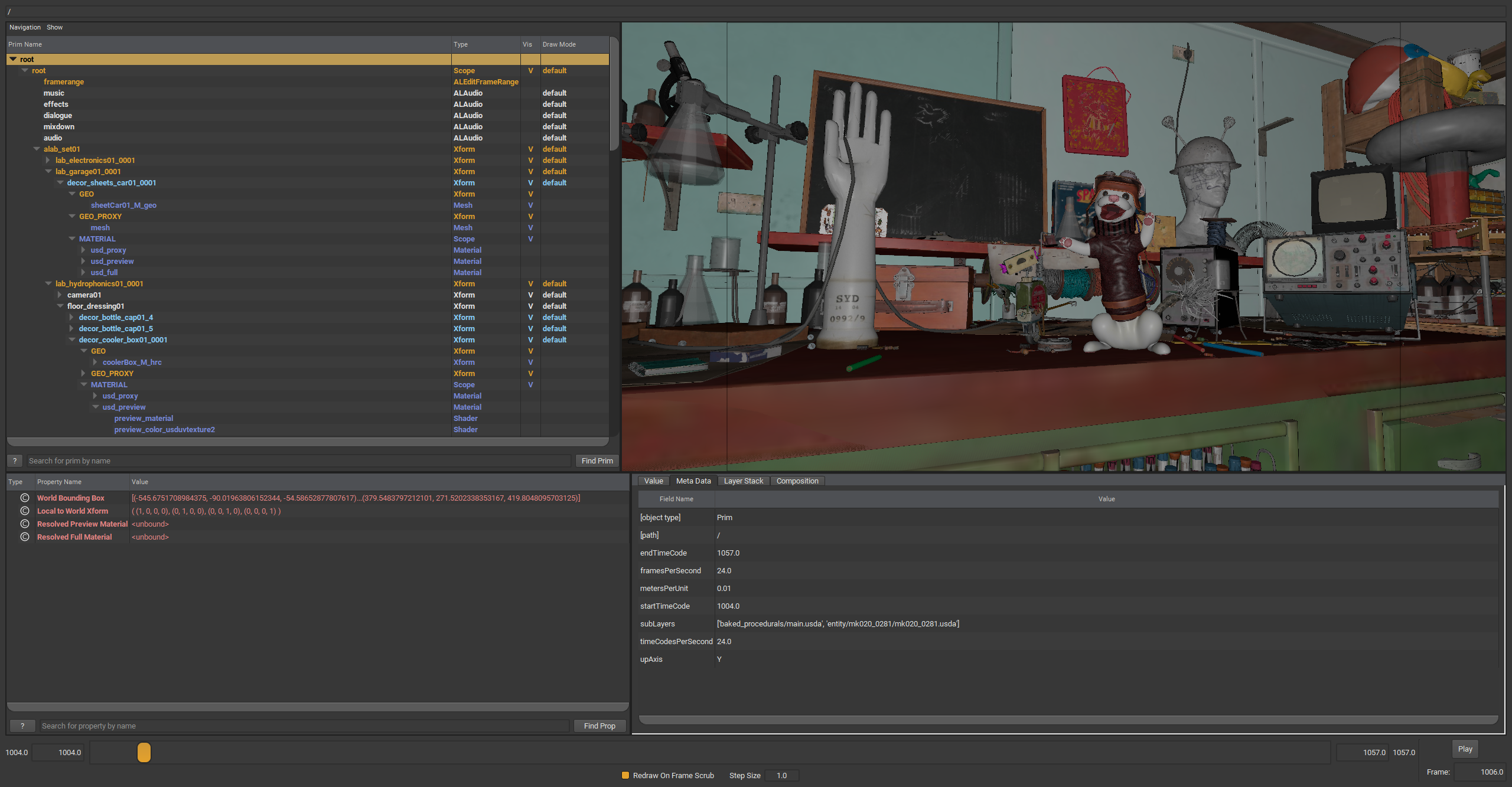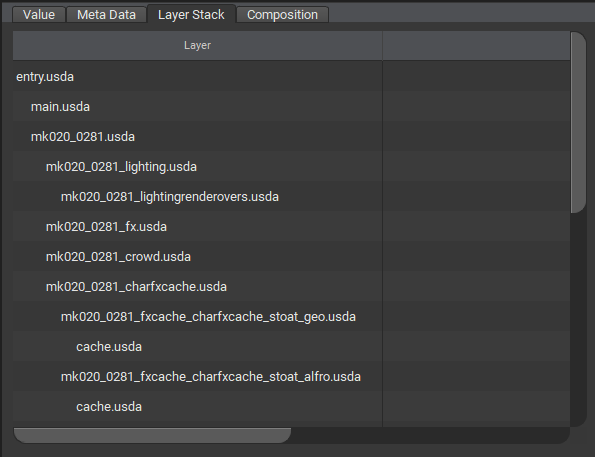So, what even is  USD?
USD?
In short, USD is a way to describe 3D-Scene Hierarchies.
 Animal Logic ALab USD Scene, inside USDView
Animal Logic ALab USD Scene, inside USDView
Generally speaking, hierarchies consist of entries (aka. nodes) that have parent/child/sibling relationships with other nodes.
In USD, these nodes can have “physicality” (think of Geometry, Animation data, etc…) or be more abstract like grouping items, materials, shaders, and even “settings” can be expressed as a node within a hierarchy.
Where USD differs greatly from other scene descriptions, is in its ability to combine hierarchies together with varying types of behavior (this is known as composition). Within USD you can non-destructively refer to- or graft other hierarchies together, re-define previously defined data, collaborate with many others on the same hierarchy, and much more.

Part of the list of USD scenes that make up the composition of Animal Logic ALab USD Scene, inside USDView
But wait! There’s more!
Beyond non-destructively combining hierarchies, USD is built to be extensible.
For instance, extending USD with a plugin that can parse a bespoke or commercially available file format and use those files directly inside USD.
A concrete example would be to support using FBX files directly inside a USD hierarchy
All in all, USD aims to be a portable interchange format by defining a shared “language” sort to speak to describe scene and 3D data.
This idea is not new, but USD takes this a step further by also offering a way to consistently draw/render/image scenes. This is made possible through Hydra, USD’s backend rendering technology.
This book does not currently cover Hydra concepts, but may do so in the future